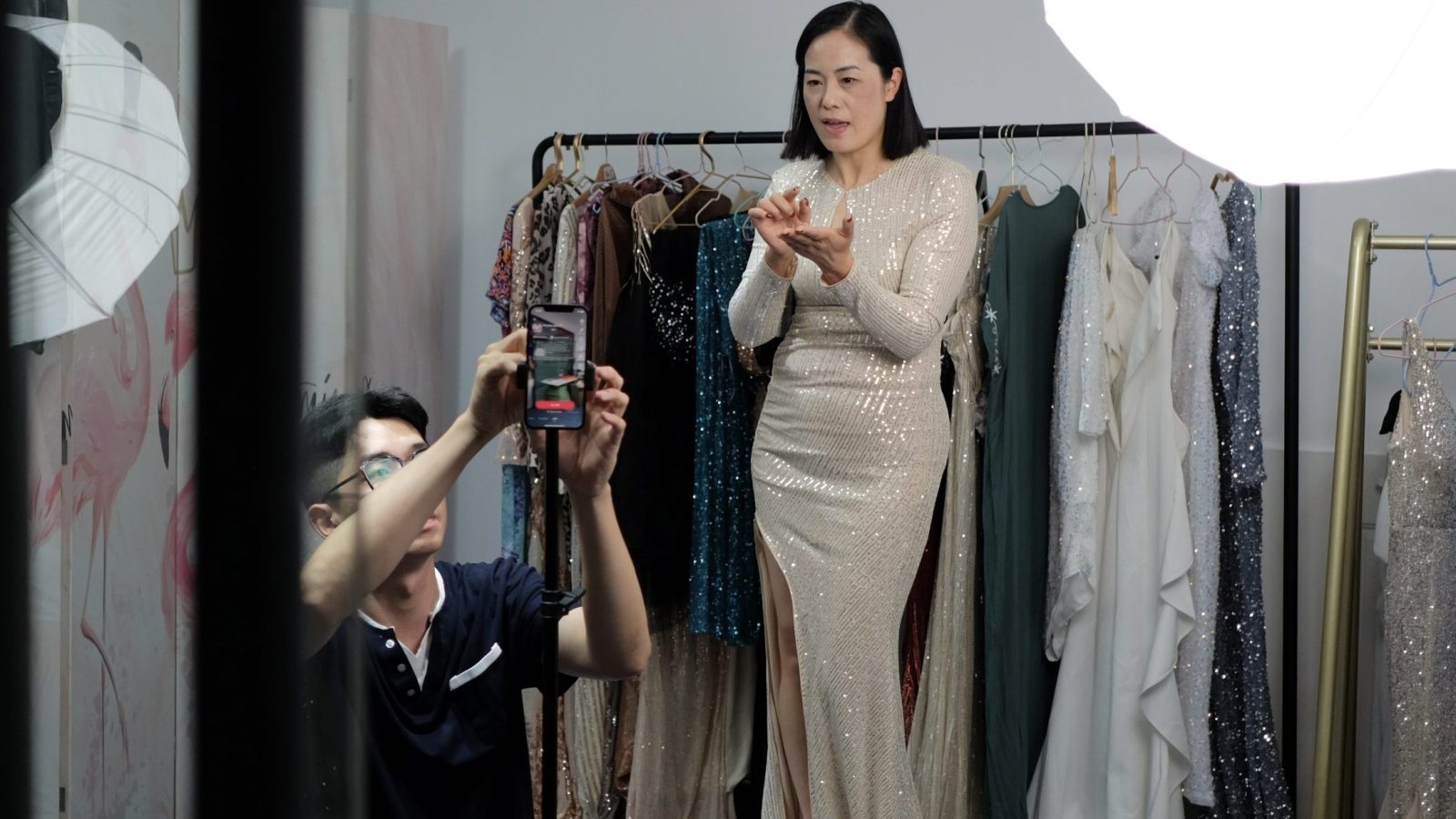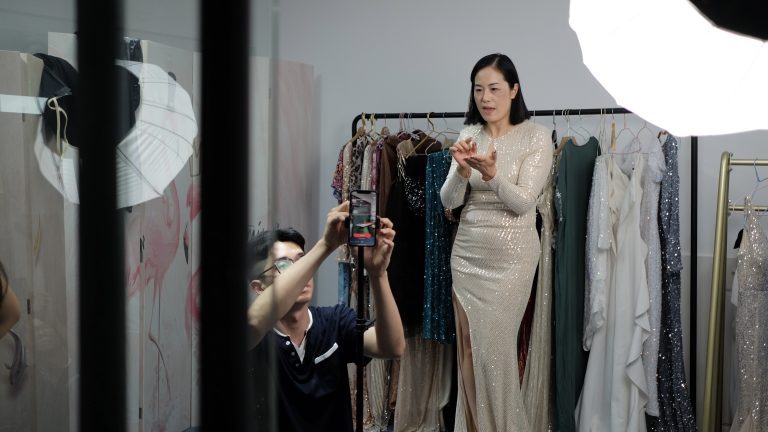World
What are you wearing? Rest of World’s fashion quiz

The internet has transformed the way the world shops, as fast fashion behemoths challenge traditional retailers and influencers supercharge new trends. Let’s see how well you know the global fashion business.
1. Shein is booming in Latin America. But one of its most popular items isn’t actually for sale. What is it?
Noriko Hayashi/Bloomberg/Getty Images
- The plastic bags Shein clothes are packaged in
- Free hats from Shein pop-ups
- Shein-sponsored Wi-Fi portals
2. Online shopping returns in the U.S. doubled each year from 2019 to 2021. What was the value in 2021?

- $6 billion
- $73 billion
- $218 billion
3. Lagos is home to a bustling market for counterfeit clothing. What is the local term for knockoffs?

- Discount designs
- Fake originals
- Authentic bootlegs
4. What is the value of China’s thriving livestream shopping industry?

Yvaine Ye for Rest of World
- $5 billion
- $100 billion
- $500 billion
5. Want an alternative to fast fashion? Designers here have been embraced by stars like Bella Hadid and Blackpink’s Jennie.

- Indonesia
- Vietnam
- Brazil
6. To protect local business, which Southeast Asian country is limiting Chinese e-commerce imports?

- Cambodia
- Indonesia
- Myanmar
7. Delhi’s Chandni Chowk market was built in the 17th century. Now it’s going ___?

Nipun Prabhakar for Rest of World
- Out of business
- Viral
- Exclusively e-commerce
The answers
1. A
The plastic bags Shein clothes are packaged in
Shein’s reusable plastic bags are so popular that they often end up outliving the garments they once transported. Customers have been known to repurpose the packaging to carry everything from toys to cosmetics to beer and even tamales. “People feel that the brand is not giving them a package that’s garbage, but an additional item they can use, making the most of every peso they spend,” said Tania Honorat, a social researcher from Bitácora Social, a research center focused on societies and business. One clothing reseller in Colima, Mexico, said she even resells the bags, for up to 2 pesos (about 10 cents) each.
2. C
$218 billion
Sometimes, an outfit that looks chic online is anything but when it arrives in the mail. As online buying ballooned during the pandemic, so did returns. In the U.S. alone, returns during 2021 of fast-fashion clothing jumped by 22% from the year before. Return shipping costs often exceed the value of the ultralow-priced garments. To find out where these clothes actually end up, Rest of World purchased and returned four items from Shein, while using Apple AirTags to track the returned garments’ journey. Read the investigation here.
3. B
Fake originals
“Fake originals” — designer dupes, alongside clothing branded Aidads, Baiencglaca, Berbuery, and Guccy — are imported from Chinese shopping platforms like AliExpress. These items cost a fraction of the price of the real thing.
4. C
$500 billion
Although less popular in the West, nearly half of China’s internet users had shopped on livestream by mid-2023. Livestream sellers use videos — often accompanied by a dizzying array of visual effects, sounds, and graphics charting discounts and special offers — to promote and sell products. The ultimate goal is to convince the thousands of viewers who tune in to buy a bag, a pair of shoes, or the latest smartphone. Watch our video for a look behind the scenes with sellers in Vietnam, Pakistan, and Indonesia.
5. B
Vietnam
Vietnamese labels are finding fans online as fashionistas and celebrities embrace them. When Jennie from South Korean girl band Blackpink posted pictures of a new eyewear collection, her fans zeroed in on her gray miniskirt. They tracked down the lace-edged skirt to Vietnamese brand L Seoul, and nearly crashed its website with their orders. Hashtags such as #Vietnamfashion and #Vietnamesefashion on Instagram and TikTok have amassed tens of thousands of gushing posts and millions of likes, in contrast to the growing disenchantment with Chinese fast fashion brands Shein and Temu.
6. B
Indonesia
“If we are flooded with imported goods, our micro, small and medium enterprises could collapse,” Zulkifli Hasan, Indonesia’s trade minister, said in July. Indonesia has introduced measures to limit sales of cheap imports on e-commerce platforms such as Shopee, Lazada and TikTok Shop, and even banned Temu.
7. B
Viral
YouTube is helping small businesses at Chandni Chowk — one of Delhi’s oldest markets — attract a new generation of customers. “It changed my whole life,” said Mohammad Ali, one of several shopkeepers who struggled to find customers until their stores were featured on prominent YouTube channels. The business goes both ways, as YouTubers charge stores for the publicity that their videos provide.








